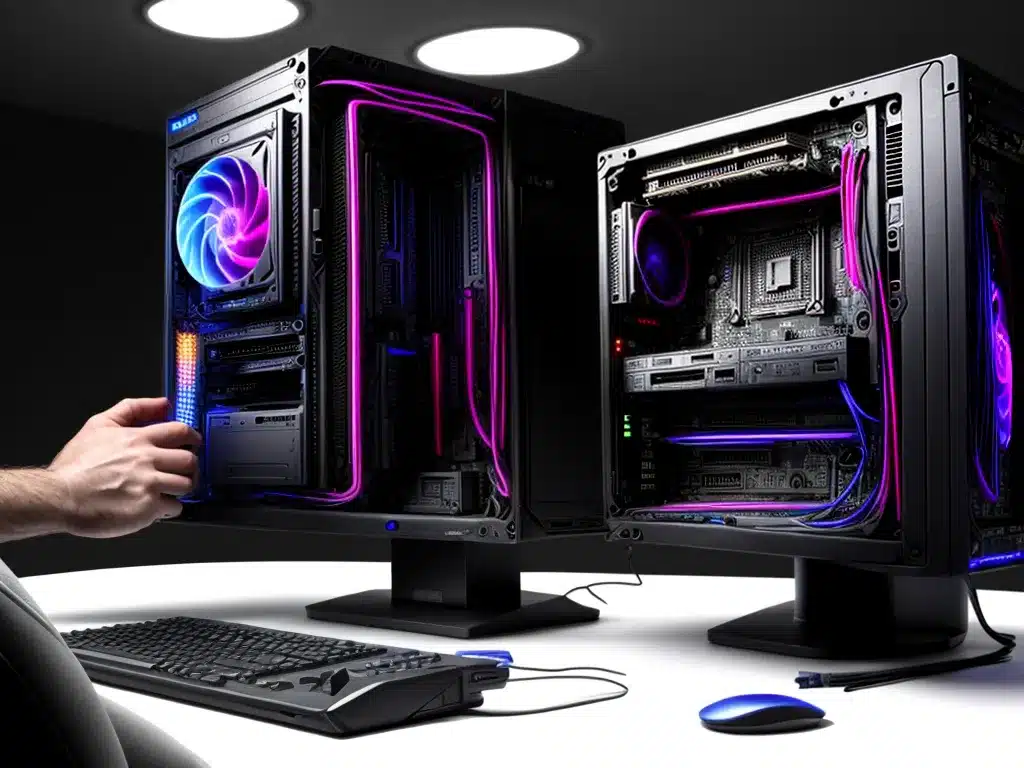Random crashes and freezes can be incredibly frustrating. However, with some diligent troubleshooting, it’s often possible to identify and resolve the underlying issue. Here is a comprehensive guide to troubleshooting random PC crashes and freezes.
Symptoms of Random Crashes and Freezes
There are a few common symptoms that can point to random crashes or freezes:
-
The PC suddenly stops responding and you cannot interact with any programs or applications. The mouse and keyboard become unresponsive. This is known as a system “freeze”.
-
The screen goes blank and the PC immediately shuts down unexpectedly. This is known as a “crash”.
-
Applications start closing unexpectedly or you receive error messages before a crash or freeze occurs.
-
The PC takes longer than normal to boot up after a crash or freeze.
-
Crashes and freezes can happen randomly while using any application, during bootup, while waking from sleep mode, etc. The circumstances are unpredictable.
Potential Causes
Random crashes and freezes can be caused by many different issues. Here are some of the most common culprits:
Hardware Problems
-
Faulty RAM modules – Bad RAM can cause random errors and system instability. Running a RAM test can identify errors.
-
Overheating – Internal components like the CPU and GPU overheating can definitely lead to crashes and freezes. Check temperatures.
-
Failing power supply – If a PSU is starting to fail, it can cause random crashes due to insufficient or unstable power delivery.
-
Failing hard drive – A HDD that is deteriorating can cause crashes during read/write operations. Check S.M.A.R.T. data for errors.
-
Loose connections – Ensure all internal cables and connections are properly secured. A loose cable can intermittently lose connection.
Software & Driver Issues
-
Driver conflicts – Conflicts between two drivers, or a driver and software can lead to system instability.
-
Buggy software – Problematic software and services running in the background could be to blame.
-
Virus or malware infection – Malicious programs can definitely be a source of crashes and erratic system behavior. Scan with antivirus software.
-
Windows system file corruption – Critical Windows system files could have become corrupted, leading to crashes. System File Checker can find and restore corrupted files.
-
Registry problems – Corrupted registry files where system config data is stored can cause crashes. Registry cleaners can help identify issues.
Troubleshooting Steps
With the potential causes in mind, here are some steps to systematically narrow down and identify the root cause:
1. Check Temperatures
Use hardware monitoring software like Speccy or HWInfo to check component temperatures. Look for any abnormally high temperatures that could indicate overheating issues.
If there are overheating components, improve case airflow and check that fans are working properly. Consider re-applying thermal paste between CPU/GPU and heatsinks if temperatures remain too high under load.
2. Scan for Viruses and Malware
Use up-to-date antivirus software like Windows Defender or Malwarebytes to perform a full system scan. Quarantine or remove any infections found.
Viruses and malware are a common source of random crashes and instability. This quick check could identify the smoking gun.
3. Update Drivers
Access Device Manager, review all devices, and check for any that have warning symbols indicating a driver problem. Update any outdated drivers from manufacturer websites or use a driver update utility to fetch the latest versions.
Pay particular attention to graphics card drivers. GPU driver crashes can significantly affect system stability.
4. Check RAM for Errors
Use Windows Memory Diagnostic or an app like MemTest86 to perform an extended RAM test. This will detect any faulty modules causing errors.
If RAM errors are reported, try removing and reinserting RAM sticks one at a time to isolate which module is faulty. Consider replacing defective modules.
5. Monitor Event Viewer
Open Event Viewer and look under Windows Logs > System for any error events reported around times of crashes. The error codes and messages can provide clues.
Search online to research the meaning of any critical error codes noted. This can reveal the failing component or software.
6. Stress Test Hardware
Use heavy system stress testing apps like Prime95 and FurMark to stress test the CPU and GPU. If crashes and freezes occur during stress testing, it likely indicates a hardware defect with that component.
Consider replacing the CPU or GPU if they cannot pass sustained stress testing without failures. An overheating issue is also possible.
7. Clean Install/Update Windows
As a last resort, try reinstalling or resetting Windows to eliminate any corrupt OS files. Backup data first!
Or, use System File Checker to scan for and restore corrupted system files. Update Windows and drivers to eliminate any bugs in the current version.
Preventative Measures
Here are some tips to help prevent random crashes and freezes:
- Keep Windows and software up-to-date to reduce bugs.
- Don’t overload power supply. Upgrade wattage if needed.
- Maintain reliable cooling for internal components.
- Avoid shady downloads and sites to prevent malware infections.
- Limit overclocking which increases instability.
- Use reputable quality RAM sticks. Enable XMP for optimal performance.
By methodically following these troubleshooting steps and preventative measures, you should be able to resolve frustrating random crashes and freezes on your PC. Pay close attention to error logs and patterns which can reveal the faulty component. With some diligent testing and investigation, you can get to the bottom of the issue.













